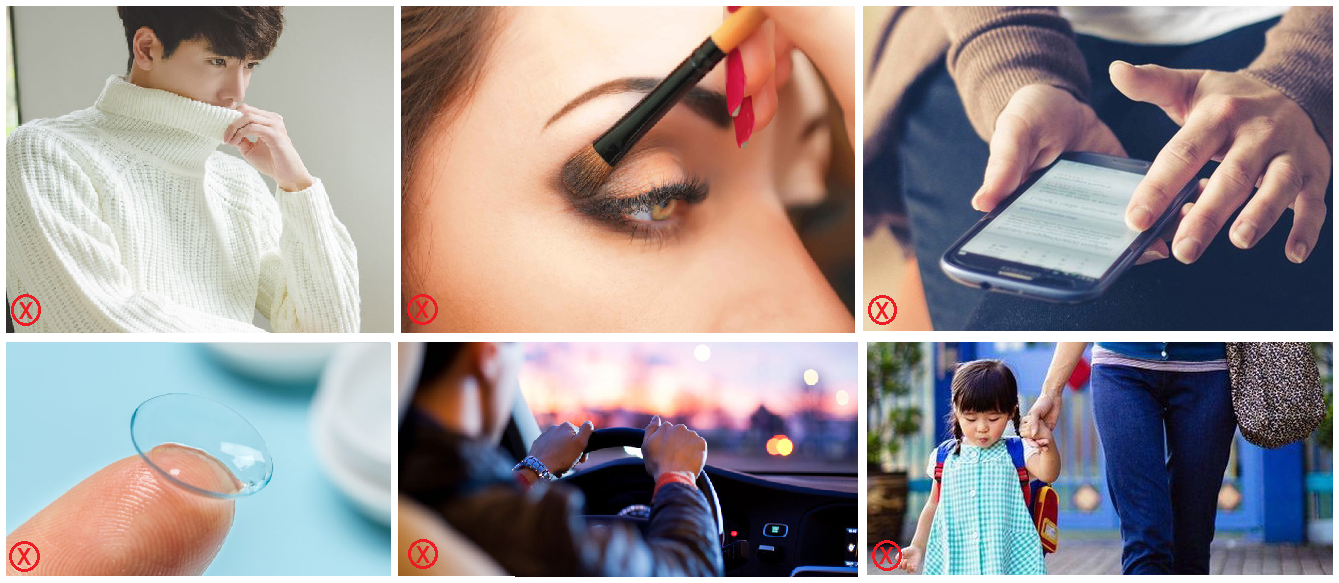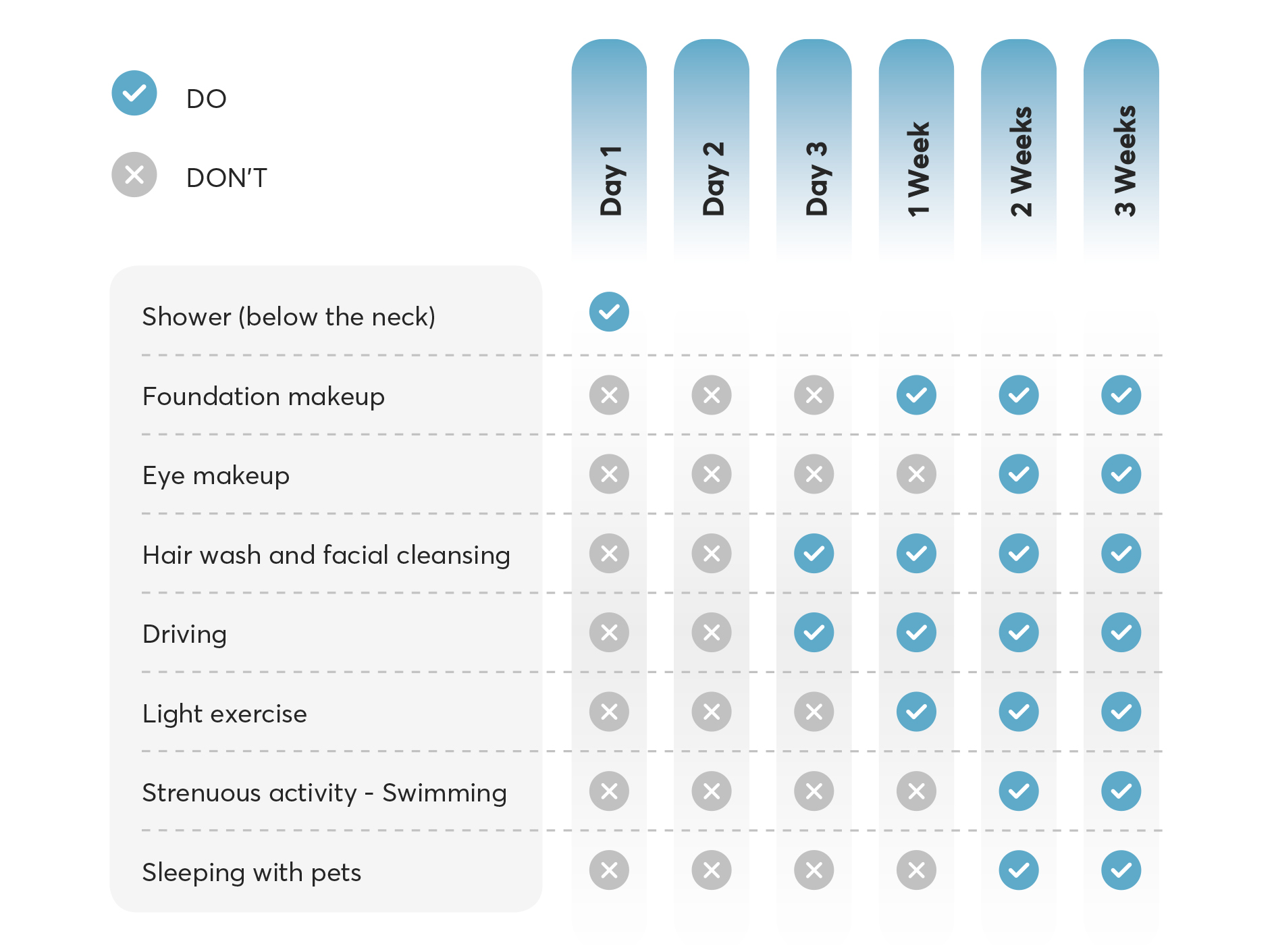BEFORE, DURING AND AFTER PHAKIC SURGERY
The PHAKIC ICL is a surgical adjustment of refractive error using a highly safe lens that is tailored to each eye’s parameters, directly implanted behind the iris and in front of the lens. This method provides high definition images without eroding or changing the cornea shape. Phakic ICL has an adjustment threshold of up to 18 diopter myopia or 10 diopter hyperopia with accompanied by 6 diopter astigmatism ICL lens and can correct up to 30 diopter of myopia, 14 diopter of hyperopia with 10 diopter of astigmatism.
Phakic has several advantages in which intraocular lens is completely removable, does not cause dry eyes, provide sharp, high-definition vision and also the ICL lens has built-in UV protection.
For safe surgery and maximum effectiveness, Japan International Eye Hospital suggests the following requirements that patients need to follow before, during and after Phakic surgery:
On the day of the surgery
Notes about clothing:
- DO NOT wear tight pullovers or shirts made of fur
- Please wear easily removable footwear, as the patient changes into surgical slippers and wears them into the operating room prior to the surgery.

Notes about make up:
- DO NOT makeup and use cosmetics on the day of the surgery
- DO NOT use foundation, sunscreen, curling lashes and lipstick
- DO NOT use makeup remover and Eye cream
- NO hairdo nor using perfume
Prohibited items in operating room:
According to the regulations of the operating room, please do not bring items from outside, especially mobile phones and food.
Daily Activities:
- EAT AND DRINK normally (except diabetic patients)
- Continue using your prescription drugs
Notes on cotact lens:
- Hard contact lenses: stop using at least 1 months before examination and surgery
- Soft contact lenses: stop using at least 2 weeks before examination and surgery
When you arrive at the hospital:
- DO NOT drive by yourself on the day of surgery
- Please do not bring children with you on the day of surgery.
Daily routines:
Please refer to the following table:

Regarding eye cleaning and protection
- After the surgery, the patient’s eyes may feel itchy or tearful. In this case, use antibiotic drops as directed by the doctor. Be sure to use a clean towel, kleenex or absorbent paper around the eyes.
- Be sure to wear sunglasses or protective glasses to protect the eyes when in a smokey or dusty environment
- After returning home, the patient may use cooled boiled water and clean cotton gauze or face towels to clean the eyes
- Avoid any sort of water that could come into contact with your eye 3 days after the surgery
Regarding Movement
- After the day of surgery, please rest at home
- After two days of surgery, patients can exercise lightly
- Immediately after surgery, patients must not drive vehicles (e.g., bikes, motorbikes or cars) because complete vision has not been restored
Regarding Work
- 4-6 hours after the surgery, you can do some gentle eye activities such as opening your eyes normally, reading books,...
- The day after surgery, the patient is able to work normally with a computer and mobile phone. However, please do not do any heavy work.
- Use the 20-20-20 rule: every 20 minutes spent using a screen; you should try to look away at something that is 20 feet away from you for a total of 20 seconds
Use protective glasses
- Protective glasses are used after surgery. Check with your doctor about which glasses to use.
- Please wear the protective glasses when sleeping for 3 to 6 days after surgery to protect the eyes from rubbing during sleep.
- Either the patient’s sunglasses or the protective glasses that the hospital provides can be used when leaving the hospital.

Regarding eye medications
- Be sure to follow all instructions by doctors regarding your eye drops and oral medication. In case you do not comply with the doctor's instructions and use the medication on your own, you will be at high risk of getting eye infection. Moreover, it will affect your postoperative recovery quality.
- Before using eye drops, wash your hands thoroughly with soap;
- Wipe the eyes slowly and gently with a clean gauze pad;
- Do not let the tip of the eye dropper touch the eyes or eyelashes;
- Do not use eye drops continuously. In other words, wait for a five-minute interval between applications of eye medication;
- Use an absorbent cloth or kleenex tissue for extra drops that do not enter the eye.
- For the first month after surgery, even if there is medication left in the bottle, do not use it if it has been opened for more than twenty (20) days after surgery. Please discard it.
- For the second month after surgery, use eye medication from the same bottle until it is one month old. Then, please discard it.
Periodic examination
Post operative schedule: 1 week, 1-3-6-12 months which are part of the proper eye care procedures that the patient must observe after the eye surgery so that an accurate visual finding will be derived, enabling the eye specialist to give the final eye analysis
